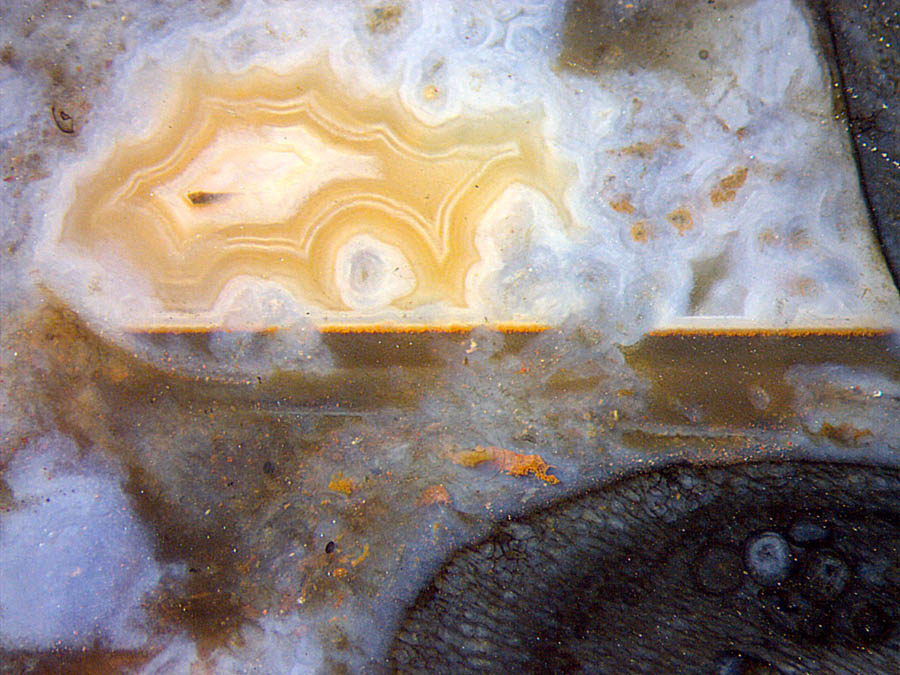Agates and fossils from
watery habitat (1)

This
image combined with the above headline may be confusing in more than
one way: The horizontal line could be thought to be
a former water level, which is not. Agates are often thought to be
formed
at high
temperatures but they are not. Hence it will be interesting to consider
what had been going on here 400 million years ago in the watery habitat
part of which had turned into the famous Rhynie chert.
Image: Banded agate, coated fungus hyphae, early land plant with fungus
globules. Image width 4.3mm.
This sample shows one of the early land plants, Aglaophyton,
lying flat. Some fungus
had formed globular objects
seen here below right,
also known as chlamydospores, in the inundated
and probably decaying
plant. It is not known whether the same fungus
or another species, a water-dwelling one, had grown thin hyphae
throughout the silica-rich water surrounding the plant. The hyphae got
coatings of silica gel, now seen as bluish chalzedony.
Then, for reasons unknown, a shallow trough
had formed, with an upward bend seen here on the left.
The space above the
trough, except for the coated hyphae, was still watery. Silica clusters
formed in the slightly supersaturated liquid. When they became so big
that thermal motion could not keep them afloat any more, they settled
into a heavy liquid suspension which separated itself from the lighter
liquid by a level
surface. In the present case, something dark must
have got stuck to the settling clusters but not to the coatings, which
must remain unexplained here. Eventually the dark sediment
solidified into gel and got a thin layer
of bright-coloured sediment on top. Next came a layer of pale silica
gel covering the level face and the other gel already present in the
water.
After these deposition and coating processes, a watery cavity had
remained, whose
walls became coated with pale brown silica gel irrespective of
position. This
means that the silica clusters sticking to the wall were so small that
they had been evenly distributed in the liquid by thermal motion. Other
than the even
distribution in space, the
process did not go on smoothly with time, judging from the "banding"
usualy seen with agates. The causes of the variations are not known.
It seems that the process of forming a dark suspension with a level
surface had repeated itself in the final small water pocket inside the
agate.
It may well be that the pale brown of the agate bands and
the dark brown of the sediment
are caused by the same staining substance.
Sample: Rh2/164.3 (2011) 0.61kg,
obtained from Shanks.
H.-J.
Weiss 2019
 |
 |
142 |




